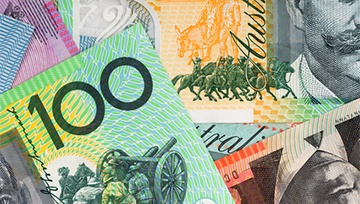Australian Dollar, AUD/USD, BoJ, RBA, Fed, Treasury Yields, ACGB, JGB – Talking PointsThe Australian Dollar has found firmer footing going into Tuesda
Australian Dollar, AUD/USD, BoJ, RBA, Fed, Treasury Yields, ACGB, JGB – Talking Points
- The Australian Dollar has found firmer footing going into Tuesday
- The BoJ pondered policy adjustments and the US Dollar sank in the aftermath
- RBA and Fed policy could impact back-end yields. Will they boost AUD/USD?
Recommended by Daniel McCarthy
Forex for Beginners
The Australian Dollar saw a significant uptick at the beginning of the week, maintaining its momentum into Tuesday’s trading session. The sharp move up has been largely attributed to the weakening of the US Dollar across the board.
The weakness in the ‘big dollar’ began with USD/JPY collapsing in the aftermath of comments from Bank of Japan Governor Kazuo Ueda.
He appeared to intimate that its negative interest rate policy (NIRP) might be reviewed later in the year if economic and price conditions turn upward.
His comments saw Japanese Government bond yields hit their highest level since early 2014 with the benchmark 10-year bond trading over 0.70%.
Treasury yields underperformed on Monday relative to most other global government bonds but not so much against Australian Commonwealth Government Bonds (ACGB).
The spread between Australian and US bonds continues to favour the US Dollar when looking at the closely followed 2- and 10-year part of the curve.
AUD/USD, DXY (USD) INDEX, 2- AND 10-YEAR AU-US BOND SPREADS

Chart created in TradingView
Looking ahead, traders will be keenly eyeing the release of Australian retail sales data for August, scheduled to be announced on Thursday. This data is of paramount importance as it provides critical insight into consumer spending patterns, which account for a substantial portion of overall economic activity.
Moreover, the unemployment rate, a key indicator of the health of the Australian economy, is projected to remain steady near multi-generational lows at 3.7%. This low unemployment rate is indicative of a robust labour market, which can contribute to stronger consumer confidence and spending, thereby potentially bolstering retail sales.
Recommended by Daniel McCarthy
How to Trade FX with Your Stock Trading Strategy
The RBA left rates on hold last week at 4.10% and the interest rate market is ascribing only a low probability of any further hikes in this cycle.
It appears that the third quarter CPI, due to be released on October 25th, is the crucial data point that might shift the needle on the RBA’s thinking around monetary policy.
The RBA has hiked by 400 basis points (bps) since the pandemic lows near zero, while the Federal Reserve has hiked by 525 bps.
It could be argued that the more aggressive stance at the short end of the curve may have led to higher yields in the back of the Treasury than that of the ACGB curve.
While the RBA seems to have put the cue back in the rack, the market is pricing in one more hike by the Fed by the end of this year before easing in 2024.
Adjustments in the disparity of monetary policy between the RBA and the Fed might be a driver for the Aussie going forward. For more information on how to trade AUD/USD, click on the banner below.
US FEDERAL RESERVE TARGET RATE MARKET PRICING

Source; Bloomberg and tastyrade
Recommended by Daniel McCarthy
How to Trade AUD/USD
— Written by Daniel McCarthy, Strategist for DailyFX.com
Please contact Daniel via @DanMcCarthyFX on Twitter
element inside the
element. This is probably not what you meant to do!Load your application’s JavaScript bundle inside the element instead.
www.dailyfx.com

COMMENTS